|
October 1, 2018 - Budapest - Amsterdam - Edmonton This morning we had our suitcases outside our room by 7:00 am and headed up for our last breakfast on the ship. The bus left the ship at 8:15 am to take us to the airport. Disembarking was very easy and just like embarking, there was little fanfare. The drive to the airport was about 40 minutes and we saw a different side of Budapest. I stand by my "Budapest has a communist feel" comment from my previous post. Once at the airport we had to wait for the KLM desk to open. While in line we heard people who traveled on other river cruise lines talking about their experiences. For the most part people were upset that their vacations were impacted by the low water levels in the rivers and they had to stay in hotels and travel by bus. Fortunately, we did not have that experience. We had to bus but we always stayed on a ship. I'm sure if you cruise when the river levels are "normal" it is different than what we experienced, but we can't complain about the service we had. The flight from Budapest to Amsterdam was uneventful. Unfortunately we didn't have much time from when we arrived in Amsterdam before we had to catch our flight to Edmonton. I love Schiphol - it's a great airport - but we had to boot it to our gate to catch the flight. We made it home to our happy dogs late in the afternoon on the 1st. And that's a wrap on our 15 day Rhine - Main - Danube, Amsterdam to Budapest river cruise adventure.
The four of us talked about whether we would do another river cruise and the answer is, it depends. We enjoyed our time together and we loved all the places we visited. We especially liked our time in Delft, pre-cruise. We are grateful that we tried river cruising but it is probably a little "slower" (especially on this itinerary with all the locks) than what we would choose again. Our final thoughts: - Fresh ginger tea is my new fav drink - I'll definitely return to Germany/Austria for the Christmas market season. Not this year but in the next 5 years. - We are grateful that our travel agent was able to gift us the silver spirit beverage package - It's hard not to compare river cruising to ocean/sea cruising. They are very different experiences. - Going through about five locks is interesting...more than that, it gets tedious - Scenic cruising was spectacular - We love the medieval towns and castles - German wine is not the best. German sausage and apple strudel (actually all their baked goods) are THE best! - WWII did a lot of damage. We must learn from the past. Please. Thanks for following along with us. While we don't have any trips planned, when we returned home, we purchased a larger Airstream so we are excited to use it next camping season. We chronicle our camping adventures here It's time to start scouring the travel sites to plan the next adventure!
0 Comments
 September 30, 2018 - Budapest, Hungary Hungary is a landlocked country in the heart of Europe. It does not use the euro - the currency is the forint and $1CDN = 217 forint. It's not an easy currency to quickly convert in your head! We are docked next to other Viking ships today - curtains closed! After breakfast we met our Panoramic Budapest excursion. It is some bus and some walking. Budapest is a city of about 2 million and it is divided by the Danube. Our tour started on the modern and flat Pest side of the river. We drove on Andrassy Ave., by the Opera House and Heroes' Square. The architecture in Budapest is stunning. They also have a Ferris wheel. The thermal baths are famous here but we did not partake. Then we headed to the Buda side...the hilly side. It's also the castle district. We had a bit of free time to look around before the bus brought us back to the ship. After the tour we explored on our own. Budapest is an interesting city but I think you need to spend more time here to appreciate and see the depth of it. After WWII, it was under communist rule and though it has democratic rule since 1989, there is a communist feel to the city. This powerful piece of art, Shoes on the Danube Bank, is in memory of the people who were made to take off their shoes before being shot in to the Danube. Approximately 20,000 Jews were murdered. We are docked by the Chain Bridge, from 1849, and we walked across in daylight and again in the evening. It was the first permanent bridge to cross the Danube in Hungary. This was our last night on the ship. We learned that the water levels are at a dangerously low level and ships are not being permitted to go through. That means the people arriving on our ship tomorrow will have to use it as a hotel and they will be bused down the Danube. There was a final farewell before dinner. Cocktails all around! Budapest is lit up at night and we went out to look around before packing. Oh and one final name sighting...
Sept. 29, 2018 - Vienna Day 2 There have been rumours swirling on our little boat of less than 200 people that the water levels between Vienna and Budapest are incredibly low and we may have to bus to Budapest. Are the rumours true? You will have to stay tuned... Our tour for the palace left the ship at 9:30 am. In hindsight we likely could have taken the subway to the palace on our own. Next time... The palace is the most visited site in Vienna - about 6 million visitors per year. Schonbrunn was the monarch's summer palace. Every summer they would haul out all their furniture and belongs to live in the palace. Part of the reason to get out of the city was to resist the diseases that quickly spread through the cramped city walls. In the 1700's, Empress Maria Theresa wanted to live in the palace year round and installed heating. She escaped the plague in the city for fresher air at Schonbrunn. The palace is huge and was built to rival Chateau de Versailles. It dates back to 1569 when the original hunting lodge was erected. The grounds are spectacular. Maria Theresa added the neoclassical Gloriette colonade at the top of the property. It has magnificent views of the city. There is also a zoo (the oldest in the world) on the grounds - we didn't visit. After touring the outside of the palace we made our way inside for our tour time of 11 am. Again, no photos allowed. It was packed with people! The Baroque palace has more than 1400 rooms and it is opulent. We started in the Great Gallery and learned how the emperor would hold public audience to listen to the problems of the people. The Hapsburgs ruled for centuries by gaining territory and wealth through marriage. There were marriage to wealthy/ruling families in Portugal, Burgundy, Spain, Hungary...There was a proverb that "the best spouse for a Hapsburg is another Hapsburg". Hmmm...I guess genetic science wasn't as advanced then. We visited a small portion of the palace - the east wing which is the "newer" side. At the end of WWI, King Charles I withdrew the Hapsburg role in all state affairs. The Hapsburgs still lead public lives in Austria. Learning about the history and seeing the palace was fascinating. I liked the intrigue of the secret room. It was a small room with no heating (fireplace) to ensure it was sound proof. This is where the secret deals (weddings, war, etc. ) would be made so the staff could not hear what was being said through the walls. The staff hqd secret passages throughout the palace walls to ensure wood was added to the fireplaces but the staff were out of sight. After the tour mom, James and I took the subway back to the city center. It was BUSY! We looked around a bit and headed back to the ship. When docking space is at a premium, the Viking long ships tie together. Your windows line up with the neighboring ship (curtains closed is a good idea!) and and you walk through ships to get to shore. The most we had tied together was three ships but I've heard there can be more. We had to be back on board by 4 pm to sail off to Budapest. Although the water levels are very low - we are sailing through.
Before dinner we had our disembarkation talk and the "you should book another Viking cruise" presentation. September 28 & 29 - Vienna, Austria If you have taken a writing course, you know about the inverted pyramid. Start your article with the most important information because that's what people will stick around to read. Well, here it is...If you visit Vienna indulge in pastries at a coffee house! Here is a menu board - you can't go wrong with any of them. If you choose to read on about Vienna, I'll write more about coffee houses, Sachertorte and our experience at the historic Demel Our excursion today was a combination of a coach and walking tour. Vienna (or Wien) is the capital of Austria with a population of 1.8 million (Austria's population is 8.5 million). In 1918, the empire lost its hold and Austria became a republic. It had been dominated by the Habsburgs from 1273 - 1918. The Habsburgs were horrible fighters so they amassed power and land through marriage. This ended up contributing to their demise...too much inter-marriage among royal families. More on that when we visit the palace tomorrow. The area had been made up of many nationalities and each of these broke away and became their own country - Poland, Hungary, Yugoslavia, Transylvania, Czechoslovakia - the remainder became Austria. Anyhow back to present day. Vienna is 50% green space. It is home to the world's oldest ferris wheel, Wiener Riesenrad, built in 1897. We visited it later in the day but didn't go for a ride. It looked VERY slow. It was supposed to be demolished in the early 1900's but they ran out money so it stayed. It was damaged in WWII and it was rebuilt with 15 gondolas instead of the original 30. We drove on the ring round that circles the city centre. The Imperial buildings are beautiful. Historically they were royalty and the wealthy lived. Today many of them are museums and 5 star hotels. Vienna is known for music and the opera house is very impressive! We toured by the coffee house that Freud frequented, the Rathaus, parks and the big statue of Maria Theresa -affectionately known as the mother of Austria. The only female ruling Habsburg. She had 16 children during her reign. Busy. We left the bus and started our walking tour. We visited the Hofburg Palace (outside) - the winter palace for the Hapsburgs and home of the Spanish Riding School with Lipizzaner horses. We walked through the high end/designer shopping area. Our guide explained that Austrians do not shop here. Austrians are generally not interested in designer names. These stores are for the tourists specifically from Russia, Japan and China. We stopped at the Plague Column. During the plague, cities would bargain with "the higher powers"...if you spare us and end the plague, then we will do "X". Usually X is build a statue. That's what this column is for and it is very beautiful. I feel condfident we won't get the plague in Vienna. Although there are a lot of people on our ship sneezing and coughing! Our tour ended at St. Stephens' cathedral. We took a peek inside. Vienna's coffee house culture is strong. Coffee houses are exquisite places to sit, relax, read the paper (if you read German) and have quiet time. When you go to a coffee house you will receive your order with a glass of water. The only thing that will be re-filled is the water. The coffee and pastries are expensive because you are also paying for using the space, reading the paper, etc. Non-Austrians may think the servers are rude because they ignore you but this is what they are supposed to do. Austrians would think it was rude if the server kept talking to you. When you are ready to leave, you let the server know. There are many fabulous coffee houses in Vienna we decided to try the historic Demel...with roots back to 1786. Sachertorte was invented in 1832 for Prince Wenzel von Metternich. He had sensitivities to cream so he wanted a cake without cream. Later there was a huge legal battle between Hotel Sacher and Demel over "The Original Sachertorte". The problem was the son of the original baker worked at both places. They settled out of court and Hotel Sacher is called the "original". That means they now out sell Demel by 5 to 1 in Sachertortes. I’ve read that both taste very similar. There is a line up to get in to Hotel Sacher because they have the official title. If you go to Vienna, try Sachertorte because it's a "thing" but you must try other cakes...they are much better! The recommended way to order Sachertorte is with cream. We had to walk off our cake so we went to the Rathaus. There was a travelling show set up. Then we took the subway (which is very easy to use) over to the ferris wheel area (The Vienna Prater) because there were Oktoberfest celebrations. This area is close to the Danube and was originally swampy area used for hunting grounds. Eventually Vienna decided to make it in to a permanent amusement park. It's massive and it was fun to walk around. We went back to the ship for an early dinner because this evening we went to a Mozart & Strauss concert. It included music, singing and dancing and was very good. We took the bus back to the ship - Vienna looks pretty at night. We are docked in Vienna overnight. Tomorrow morning we visit Schonbrunn Palace.
Thursday September 27, 2018 - Melk, Wachau Valley and Krems We arrived in Melk around 8 am but the tours weren't meeting until 10:30. James and I decided to walk in to Melk and meet the tour at the Abbey instead of waiting for the bus. We docked by a campground and walked the path through wooded areas to Melk. It was a beautiful, peaceful morning walk We found some big sunglasses And then spotted a big abbey. There are a bunch of cyclists here. Some look like they are camping and cycling and some look like they are on cycling tours. We walked through Melk up to the Abbey. We looked around the outside a bit before we had to meet up with the tour. The Abbey is massive! Originally it was a royal palace. Now it is home to 28 monks, a private school and a museum. 900 youth attend school here. The cost is 96 euro/month to attend - students do not stay at the Abbey. We met the group and toured the inside of the Abbey. No photos are allowed inside so I have nothing to share. There are likely photos on the internet if you are curious. Melk was the first capital of Austria. The palace was gifted to the Benedictine monks from Leopold II of Babenberg in the 11th century and they turned it in to a fortified abbey. The church in the abbey is pretty spectacular - in a baroque over-the-top kind of way. There are a lot of libraries (12 libraries with 100,000 books) with fresco paintings. We also learned about reusable coffins. After the inside tour we visited the gardens. They had some odd cut out characters. We walked back through town and went through a few stores. There are a lot of apricot and peach based products in this area. The monks own a bunch of vineyards and forest land. We were back on the ship by 1:30 for scenic cruising of the Wachau Valley. Another perfect afternoon for scenic cruising. The valley is famous for its white wine and warmer weather. It is a UNESCO site. When you scenic cruise the staff bring around little wine spritzers. We also decided to have some Wachau Valley wine while sailing in the area. We stopped in Krems at about 4 pm and shuttles brought us in to town. We walked around for a bit and then headed back to the ship. Tonight was an Austrian themed meal and the staff dressed up. The food was delicious. Dad was happy because he finally had schnitzel - something he has been talking about since we arrived in Germany and mom got her spaetzle. After dinner we had fun music trivia in the lounge. Oh and a couple more name sightings today... September 26, 2018 - Passau We have been in Passau for the past two nights but this morning we floated up the river and docked in a proper position without the view of dumpsters and cement. Passau is at the confluence of the Ilz, Inn and Danube rivers and its the last major German city on the Danube before the Austrian border. Our tours started at 10 am so it was a slower morning. We met our guide Alex for a walking tour of Passau. Alex explained that other parts of Germany (a country of 80 million) think this part of Germany is odd. All the German cliches that we know - pretzels, beer, leiderhosen they all come from here (Bavaria) and most Germans do not relate to them. Austrian's do - and they are right across the river. Austria's population is 8 million. They also have a major love for the Dachshund here - there is even a museum. Passau's population is about 50,000 and it is a university city with about 12,000 students. Across the river is a monastery which has a set of 321 stairs that are part of a pilgrimage. If you want to do it "properly", you go up on your knees and say two prayers per step. It will take 7-8 hours of suffering. The castle/Bishop's Residenz was built from 1219 - 1712. It's now a museum, youth hostel, restaurant and open air theater. We walked around the old town learning along the way. Almost every place we have visited along the rivers has a wall like the one below. They mark the flood years and the height of the water. In Passau, flooding on the Inn River is a result of the snow melting in the Swiss Alps. Passau, being on three rivers is very flood prone. It even flooded this year when the rest of Europe was in a drought. Our tour ended at St. Stephen's Cathedral and we enjoyed a pipe organ concert at noon. It was spectacular! It's the largest pipe organ outside the US. It is five organs with 17,974 pipes and 233 registers. You aren't allowed to record the organ (because they sell the CD's) but if you like organ music, you can easily find some with a Google search. After the organ concert we headed back to the ship for some lunch and then spent the rest of the day exploring Passau. We had a delightful day in Passau and were back on the ship by 5:30. Auf Wiedersehen Germany!
Tuesday Sept. 25 - Regensburg (still in Bavaria) First things first Happy 9th Birthday to my niece Kate! I was looking after the boys the day she was born. I can't believe that was nine years ago. Our bus left this morning at 8:30 for Regensburg (remember we are currently docked in Passau and using our ship like a hotel). I guess if you stayed on the ship, there was a shuttle bus to take you in to Passau. Viking takes very good care of its passengers. The Viking buses are very nice - clean, comfortable and they have a toilet on board. All of our tours have been great and we have an Audiovox system in our room that we take with us for the day so we can always hear the guide. We signed up for the Jewish Walking Tour in Regensburg today. Our guide, Sylvia, was incredibly knowledgeable and passionate. If you visit, I recommend booking a tour with her. After we arrived we had the usual 15 minute wait for everyone to use the bathroom. One of the annoying (but necessary) aspects of group travel. We started our tour by walking over the amazing 300 m long Old Stone Bridge constructed in the 12th century. It is the oldest stone bridge in Europe. It was damaged twice - one by Napoleon and once in the war. Regensburg was the first capital of Bavaria and is 2000 years old. It is another amazing medieval city that was untouched by WWII and it is a UNESCO site. We toured over to Germany's oldest sausage kitchen. It was built for the people working on the bridge and it stuck around for 800 years. We had hoped to stop in before we had to leave Regensburg but we didn't make it. Next time! From here we walked over to the Roman structures dating back to 179 AD. Marcus Aurelius erected the city walls on its founding. We visited the outside of St. Peter's Cathedral. Another splendid Gothic cathedral but this one has a donkey tower from the former cathedral still attached to support this one. The donkeys hauled materials up a dirt path. The outside has many statues of biblical scenes. Our guide pointed out one unfortunate sculpture depicting Jews suckling on a sow on the south side of the church facing the old Jewish Quarter. Our guide in Bamberg pointed out similar messaging on the cathedral there, though not as crude. As I mentioned in another post, most people in medieval times were illiterate so they communicated through pictures and statues. Napoleon was injured around Regensburg (not seriously) and spent some time here healing. We walked through the old town and learned of the Jewish history in the area. It is the oldest Jewish community in southern Germany. We sat on the sculpture, Mizrach by Dani Karavan made in the spot of the former synagogue which was destroyed by the Nazis in Nov. 1938 during Kristallnacht. It's a memorial to the former Jewish community and is intended as a place for people to gather together. Oskar Schindler lived in Regensburg for a brief time post WWII. Sylvia passionately discussed the Stumble Stone (Stolperstein) project and shared the story of a family who owned a shoe store. Sylvia is part of the team working on the project for Regensburg and there are 210 stones in the city. We toured passed the city hall. On the side of the city hall there are measuring rods. This is so merchants who were doing business would know how Regensburg measured length. Sylvia showed us how headstones from the Jewish cemetery were used in building construction. No one knows if it was used as just building material or if it was a "trophy" or statement to use the headstones. Regardless, it is disrespectful. This is not something Sylvia enjoys showing people but she said it is part of our history. I am so glad that we took the extended tour to learn more about the Jewish people of Regensburg. I cannot do the history justice in a blog post so please, if you visit Germany make sure you take the time to learn about the Jewish history. All of our tour guides so far have mentioned the importance of teaching about the dark times so that we can learn from them - from the Crusades to WWII. There is a lot more to the places we are visiting than charming medieval buildings. Since we had to bus to Regensburg instead of docking here, Viking provided lunch for us. More beer. I actually only take pictures with beer - I don't like it (unless I'm in China but that's another story). James drinks my beer. After lunch we had some free time. As I was doing research for this trip I learned about a stationery store in Regensburg. I made it my mission to find it while we were there. Mission accomplished! I didn't buy much but it was fun to look around. We took the bus (about 1.5 hour ride) back to the ship and had dinner. This evening we had entertainers on the ship - singers from Regensburg. They were fabulous!
Monday September 24 - Leaving the Skirnir + Nuremberg Our suitcases were outside our door by 7am. I haven't mentioned security on a river cruise. It's very different from ocean cruising. You don't scan an ID card when come and go from the ship. Instead you are given a piece of paper when you leave for the day and you hand it back in when you return. There is no scanning or checking bags at any point when you come on the ship. I guess it's easier to track 190 people vs. thousands on a big ship. You also don't scan a card to buy things - you just tell them your suite number. Truthfully though, if you have the drink package, there is nothing to buy on the ship. There is no pressure or up-selling onboard which is nice. After breakfast we said goodbye to the Skirnir and boarded the bus for our tour of Nuremberg. The included tour was a combined coach and walking tour. The Rhine-Main-Danube canal that was finished in the 1990s meant the city was no longer land locked. It also means there is a 100 mile route all the way from the North Sea to the Black Sea. Back to our coach tour... Nuremberg was where the Nazi Party held massive propaganda rallies from the late 1920's - late 1930's. The main rally was held annually in September and up to 700,000 people participated in the rallies. The last rally was in 1938. 1939 was cancelled because Germany attacked Poland on Sept. 1, 1939. What is considered the official start of WWII. The Nazi's had big plans to build many more party buildings and rally grounds in Nuremberg. Hitler chose Nuremberg because of its historic connection to the Holy Roman Empire and it's central location. The structure they were working on (but didn't complete) to hold the annual rally looks very similar to the Colosseum in Rome. We drove by the three significant Nazi Party sites. The SS Barracks - a massive building now being used for federal offices for Refugees & Migration. A large Colosseum type building which was intended to be used once a year for the annual rally. It was supposed to seat 50k. It was not finished. The final area we drove by was the Zeppelin Fields where the majority of the events took place. If you google any Nazi rally photos, they were taken here. Because we did this by bus, I don't have good photos. They are all in my head There is a permanent exhibit called Fascination (the propaganda) and Terror (the war) which I am sure is worth a visit if I return to Nuremberg one day. We drove by the Palace of Justice. The Allies decided to hold the war trials here because the courthouse was in tact and there was a jail attached to it. There were 21 sentences - 11 death, 7 prison sentences and 3 were acquitted. All of the trials happened in courtroom 600. This was the beginning of international justice. We drove by the most beautiful cemetery- St. John’s. It dates to 1234 and it was built outside the town walls to control disease - notably leprosy and the bubonic plague. The grave stones are all long and flat and the cemetery is strictly controlled- only fresh flowers allowed and they must change for the season. It was voted Germany's most beautiful cemetery in 2013. We got off the bus at the castle and walked though the “Disneyland” of medieval towns. Almost all of it was rebuilt because about 91% of the inner city of Nuremberg was bombed and destroyed in WW2. Albrecht Durer the artist famous for Praying Hands and Young Hare is from Nuremberg. You've seen these works because they have been copied many times. Durer's works are in museums around the world (none in Nuremberg) but the bronze statue below by Jurgen Goertze called The Hare - A Tribute to Durer. It depicts the dire results of tampering with nature. Or it could be a message about no one will ever be able to recreate a young hare as well as Durer, so don't try. I'm not sure who is crushed under the crazy hare - Durer or other artists. It's up to you to decide. It is used as a landmark to the pub behind it. Every place is proud of their culinary specialties. In Nuremberg, it's Lebkuchen and Nuremberg bratwurst. Lebkuchen is like gingerbread cookies but there is no ginger in them. It is a delicious combination of ground nuts, honey and spices such as cloves, cinnamon and cardamom. They taste like Christmas! We also learned about the Nuremberg bratwurst - it is smaller in size, and they are the oldest sausage recipe in Germany. To be considered Nuremberg bratwurst, they must follow the traditional recipe and be made in Nuremberg. There are 3 million sausages made daily here and exported world wide. I hope we can find some at home. We had some at lunch and they were good! Our tour brought us past the Rathaus, a cathedral (that we toured through on our own) and to the Beautiful Fountain (from the 1300's) at the square. There was a market set up as it is Oktoberfest time in Bavaria. It was fun to look around. I think this is where the Christmas markets are set up. I would love to be in Germany/Austria at Christmas market time. We watched the glockenspiel at noon. We had a three hour bus ride to meet our new ship, The Viking Modi, in Passau. We saw lots of forest and farmland. We made a pit stop at a McDonald’s which was very clean, had interesting pastries and lederhosen wearing staff. Even though we are docked in Passau now, we aren't in the charming area that we will eventually explore. We are docked at what looks like the cement plant district and there is nothing around us. This is because we aren't really supposed to be in Passau for another two days.
The Modi staff welcomed us on board and the captain had a welcome toast. Our room is exactly the same as on the Skirnir. Sunday Sept. 23 Bamberg I've mentioned in previous posts that because of an unusually hot and dry summer, the water levels on the rivers are low. This is not normal but it is cyclical - just like flood years are cyclical. The water levels on the Main River (what we are on now) isn't impacted as much because the levels are controlled by all the locks. We need to get on the Danube and that's where water is low water. The Danube doesn’t have any feeder rivers to increase levels and it has a shallow pebble bottom. That is bad news for ships. And for river boat passengers. The first day on the ship we were told during our welcome briefing that we may have to switch ships a week in to our cruise. This morning we learned the details of what the ship swap will look like. Tomorrow we will leave the Viking Skirnir and after our excursions we will be bussed to Passau to board its sister ship the Viking Modi. Passengers on the Modi will be bussed to the Skirnir. Only our program director, Stephen will move ships with us. We are happy for that - Stephen is excellent! The saddest part of all this is the Faber Castell excursion I signed up for in Nuremberg has been cancelled. As a stationery lover, I was really looking forward to visiting. After the ship swap details talk there was a presentation about optional excursions for the second half of the trip followed by a nautical talk with the ship's chief engineer. We arrived in Zeil am Main around 1 pm and boarded the bus to take us a short drive to Bamberg. The Viking Skirnir will continue to sail and we will meet her in Bamberg at 5:30 pm. We met Nick (another awesome guide) and he toured us through Bamberg. We are still in Franconia (Bavaria). The old town is a UNESCO site - the largest medieval town with 1400 buildings. Bamberg was not an important community in WWII times so the old town was not bombed. Some in Bamberg felt slighted that they were ignored in the war. The legend goes they decided they were spared so the Allies would have a picturesque place to drink the best beer in Germany to celebrate their victory. Germans are competitive about their beer and sausage. Kind of like how each Mediterranean country/region brags they have the best olives and olive oil. I love Bamberg! I felt like I was walking around a (German) scene from Harry Potter. It is Sunday so many places are closed. Bamberg was found in 902 AD on seven hills and each has a church. We only walked up one and saw the cathedral and palace area with Gothic, Baroque and Romanesque styles all in one! Another cathedral that took hundreds of years to complete. The town hall was built over/on the Regnitz river at the confluence with the Main River. Very unique with frescoes painted on the side. Every place we visit, our guides warn us about the bike lanes and to stay clear of them as a pedestrian. Nick gave us some wise advice from his experience - never argue with a German girl on a bike. You will lose. Noted. We learned about rauchbier (smoke beer). It is an ancient process of drying malt over open fires (of beech wood) to get a smokey flavour. The brewery is from 1405 and back in the day, the brew master had a fire break out. The barley was burnt and he was too stingy to throw it away so he brewed with it. People liked it and voila - rauchbier! We all had a sip of the beer James ordered. James liked it the rest of us thought it smelled and tasted like a campfire. Our guide also explained the stumble stone project to us and we found some on the way to the bus. Bamberg is the northern terminus of the Main-Danube canal. We sailed through the canal this evening. This evening we packed up. Our suitcases need to be in the hallway by 7 am tomorrow.
.Saturday Sept. 22, 2018 Wurzburg to Rothenberg ob der Tauber Today we signed up for an optional tour that took us to Rothenberg ob der Tauber in the Franconia region of Bavaria. Franconia is a distinct region within Bavaria and they do not identify as Bavarian...and they have a reputation of being grouchy. They are still upset that Napoleon awarded the area to Bavaria after the demise of the Holy Roman Empire. Some of the Franks left this area and eventually founded France. That's the short version of history. Anyhow, all our guides warn us about the reputation of Franconians and Bavarians but we did not have any problem with the people! We were off the ship (in Wurzburg) and on our way down the romantic road to the charming town of Rothenberg. The scenery is beautiful - historic towns with timbered frames, farm land, trees and lots of apples. Thus the abundance of apple strudel! It's called the romantic road because of the nostalgic feeling have when traveling this road from Wurzburg to Fussen. I visited Rothenberg in 1991 as a youngin' backpacking in Europe with my friend. We stayed at a hostel for a few days, visited the medieval crime museum, bought Christmas decorations and learned about fledermaus. (I remember the most obscure things). If you can believe, Rothenberg hasn’t changed since then. I think they have some of the same snowballs in the shop windows. More on that later. Rothenberg is full of beautiful medieval buildings. We learned Rothenberg was an impoverished area that was kind of forgotten and never industrialized which is why it is stopped in time. In the late 19th century artists discovered the city and brought life back in to it. After a traditional Bavarian lunch we looked around the time. It’s full of Christmas shops and tourists. I love it here and we certainly did not have enough time in this splendid town. We took the bus back to Wurzburg passing by lots of fields of sugar beets, canola, maize, wheat and more apples. Wurzburg is a university town with 30,000 students in a city with a population of 130,000. We visited the Bishops Residenz - a UNESCO baroque palace. It has a spectacular fresco painting in the entrance, a room with mirrors and a lot of (probably too much) gold and a very ornate chapel. Taking photos inside isn't allowed inside so here are some I grabbed from the web. Oh, the snowball (schneeballen). It’s a traditional pastry in Rothenberg - dough that is balled up and fried with sugar on top or fillings inside. We were told they are good for at least 3 months. We tried them. The ones with filling are better than the traditional type. A very important name on this sign...
|
AuthorEnjoying the journey! For another perspective on our travels visit James site Archives
November 2018
Categories |

















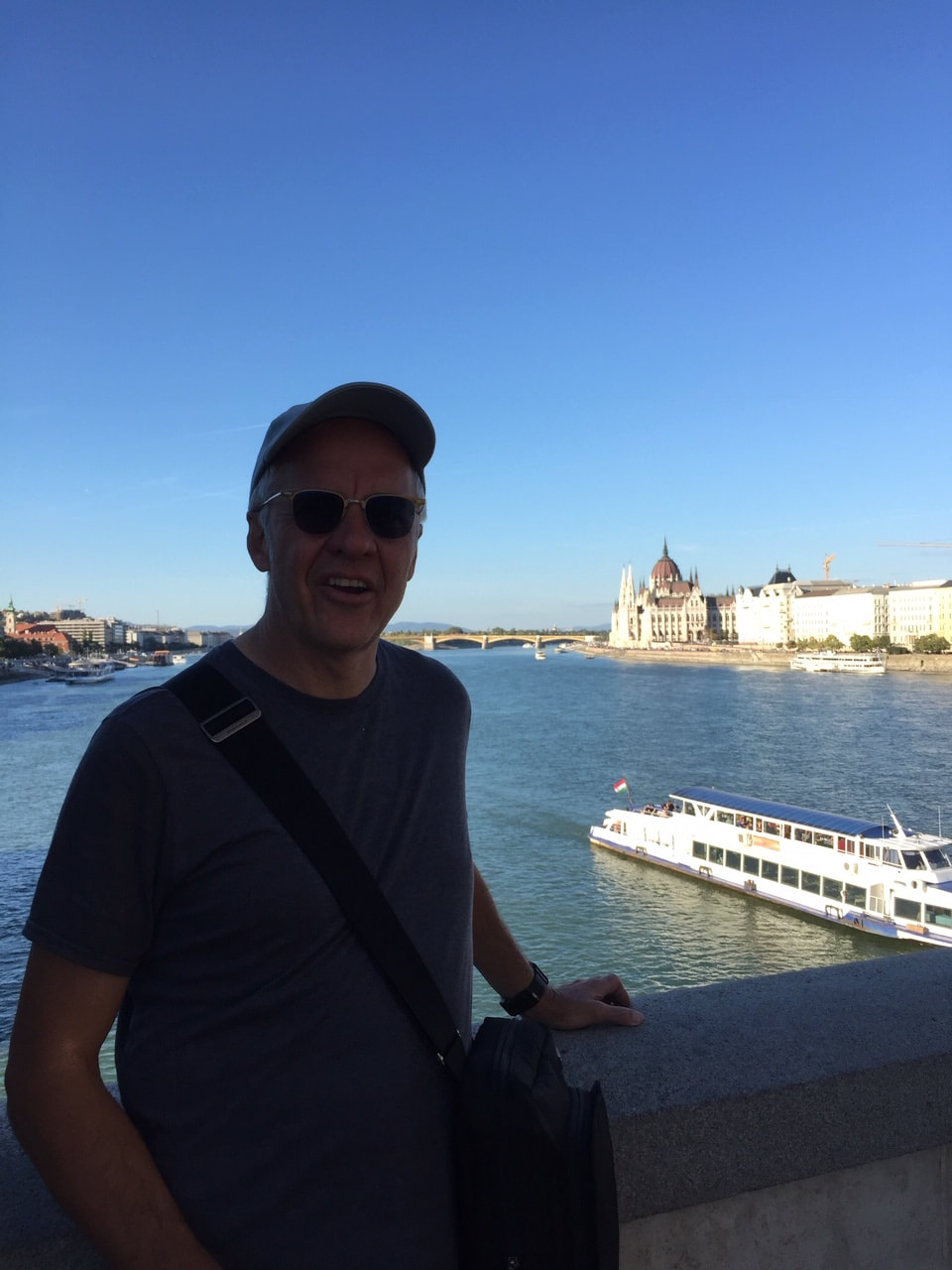


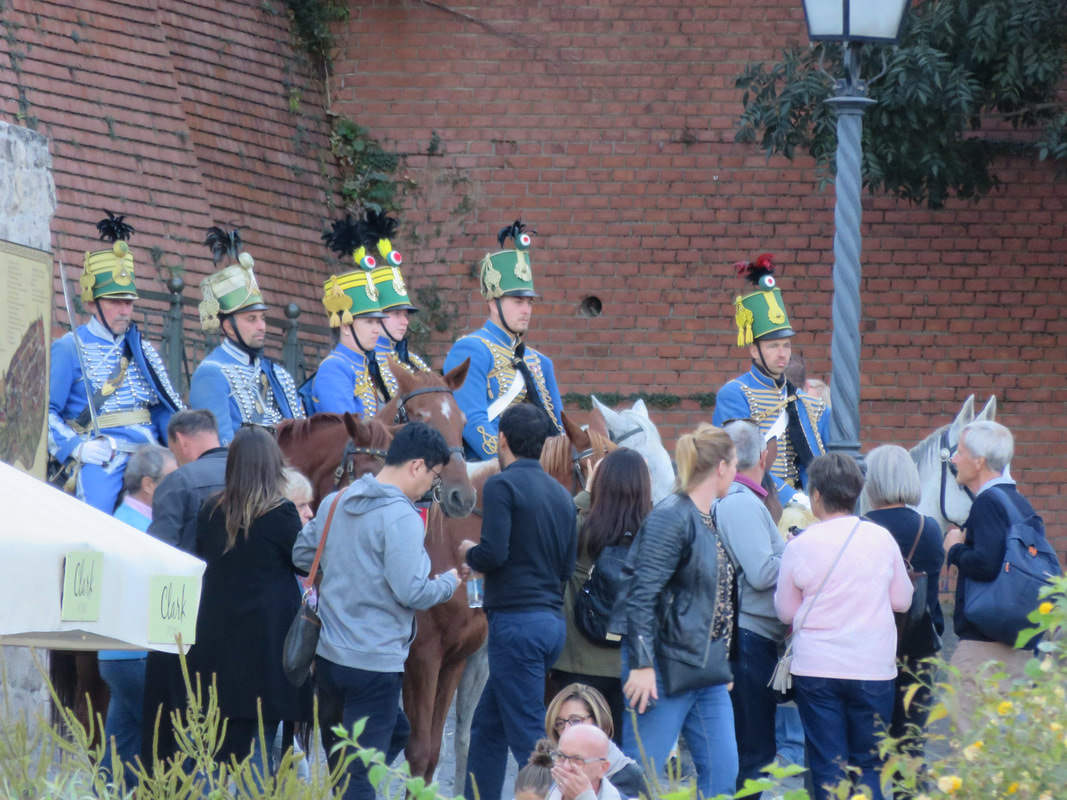

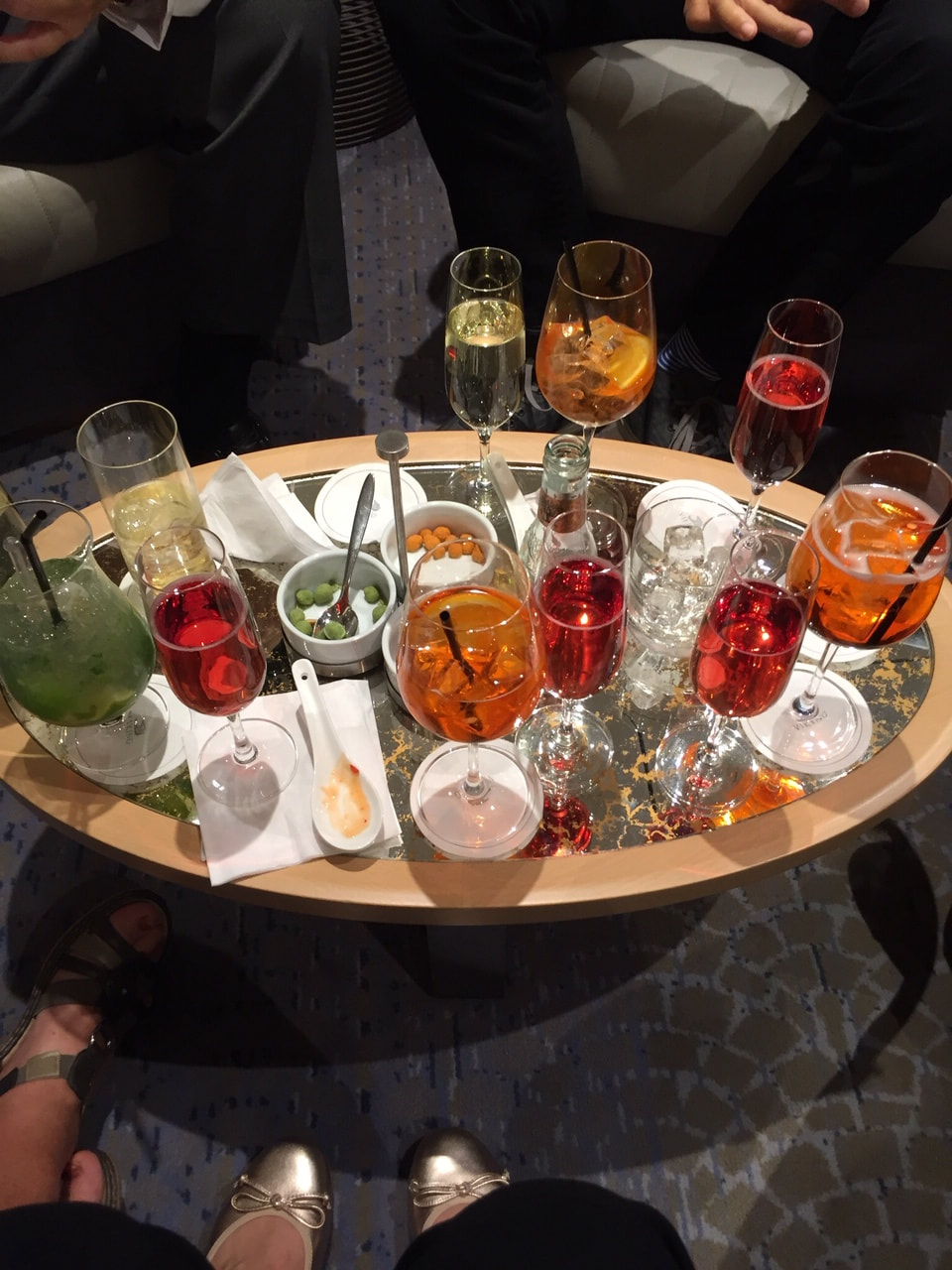

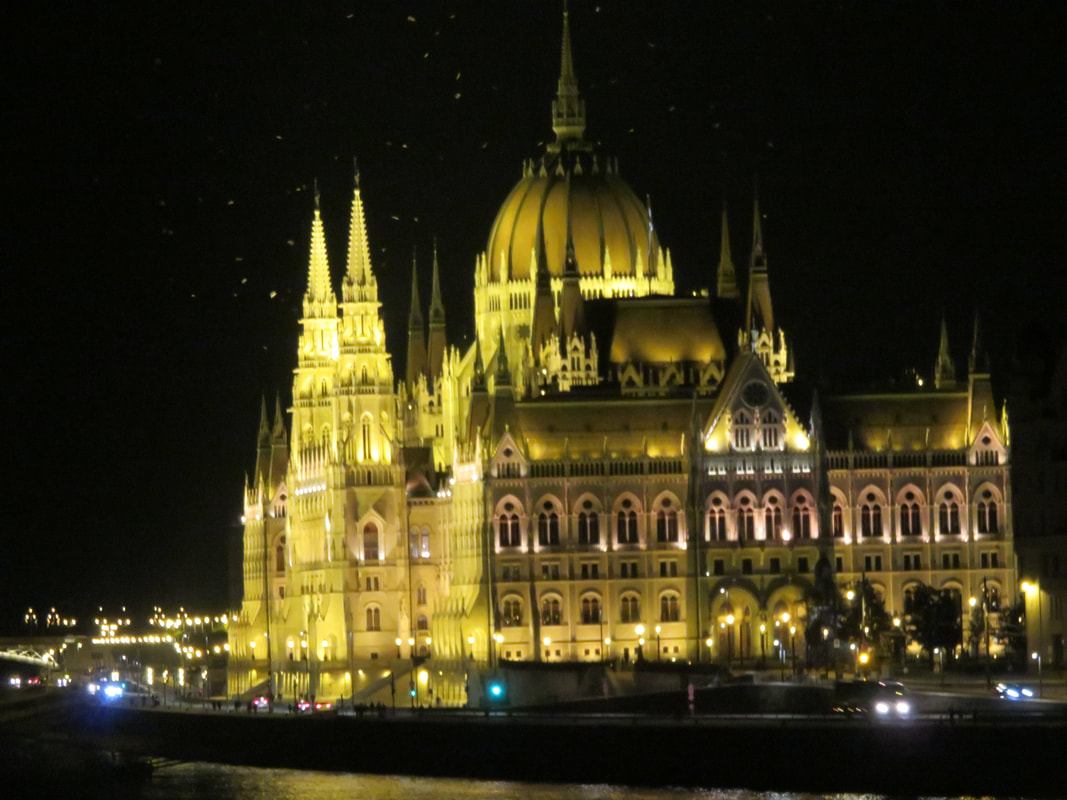






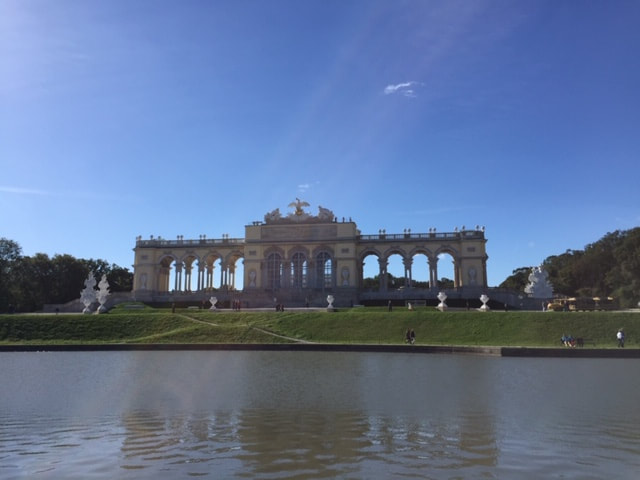



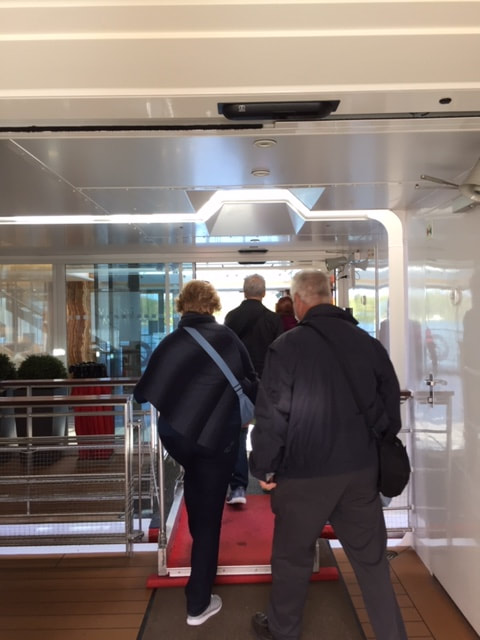








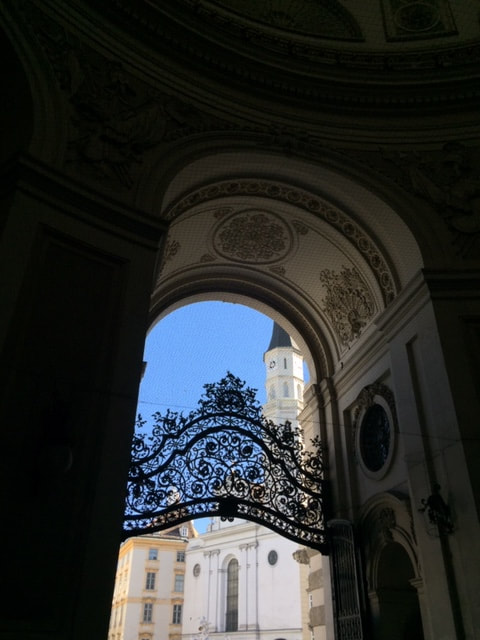

















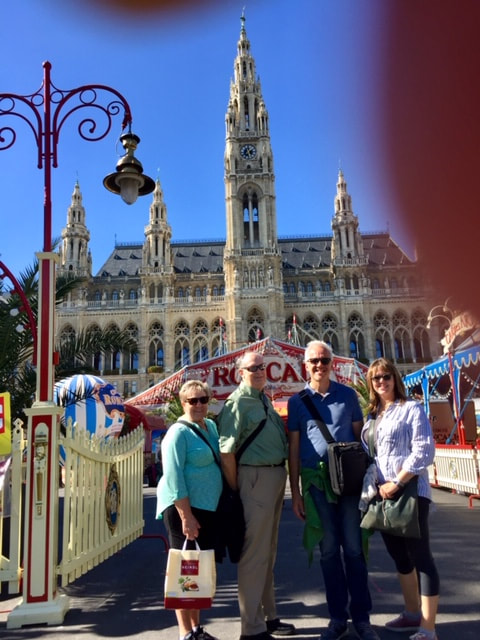











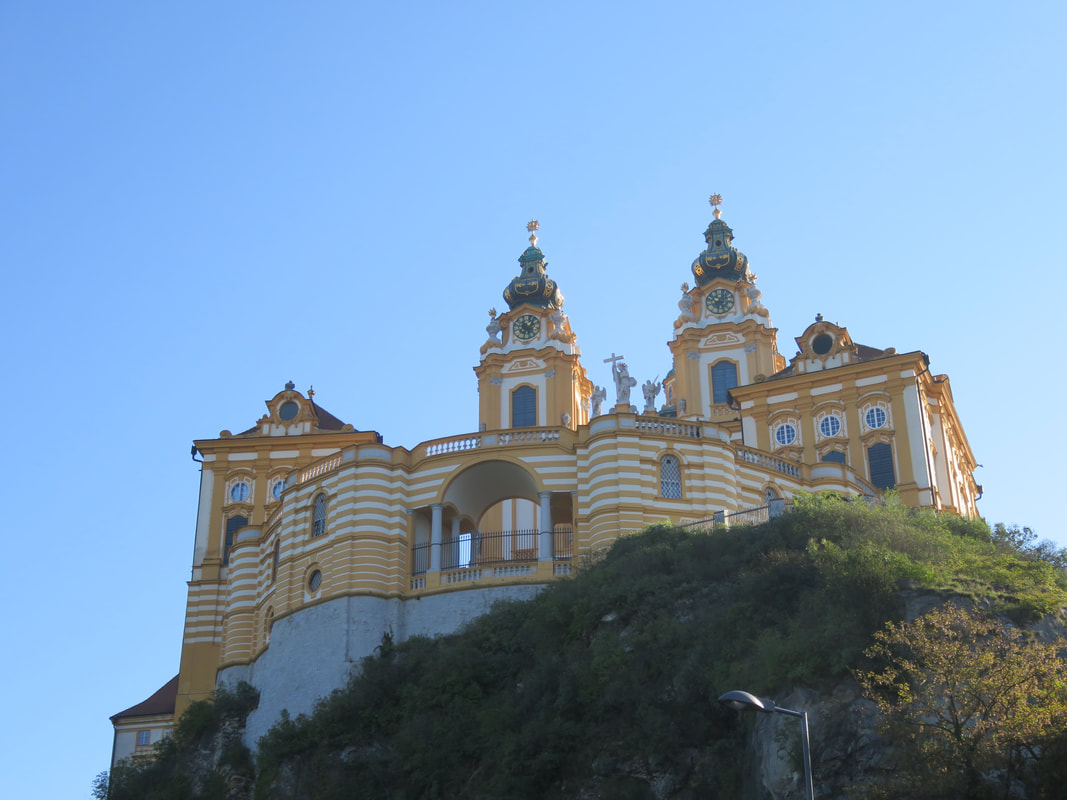





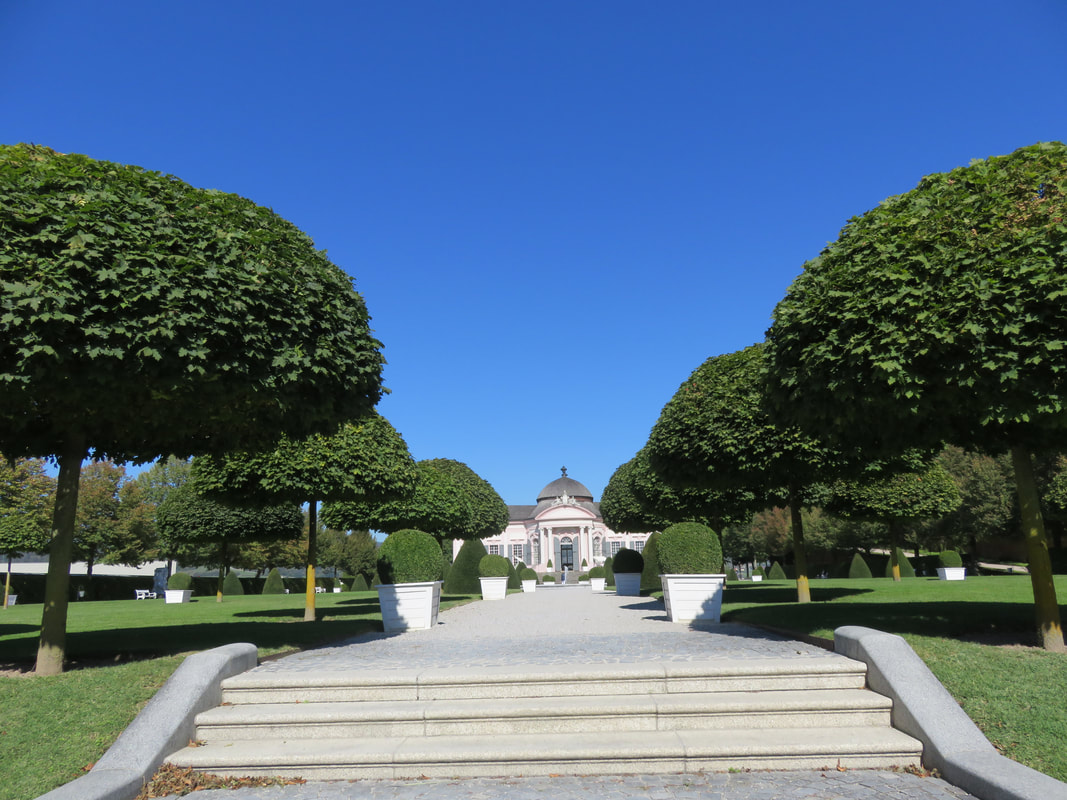






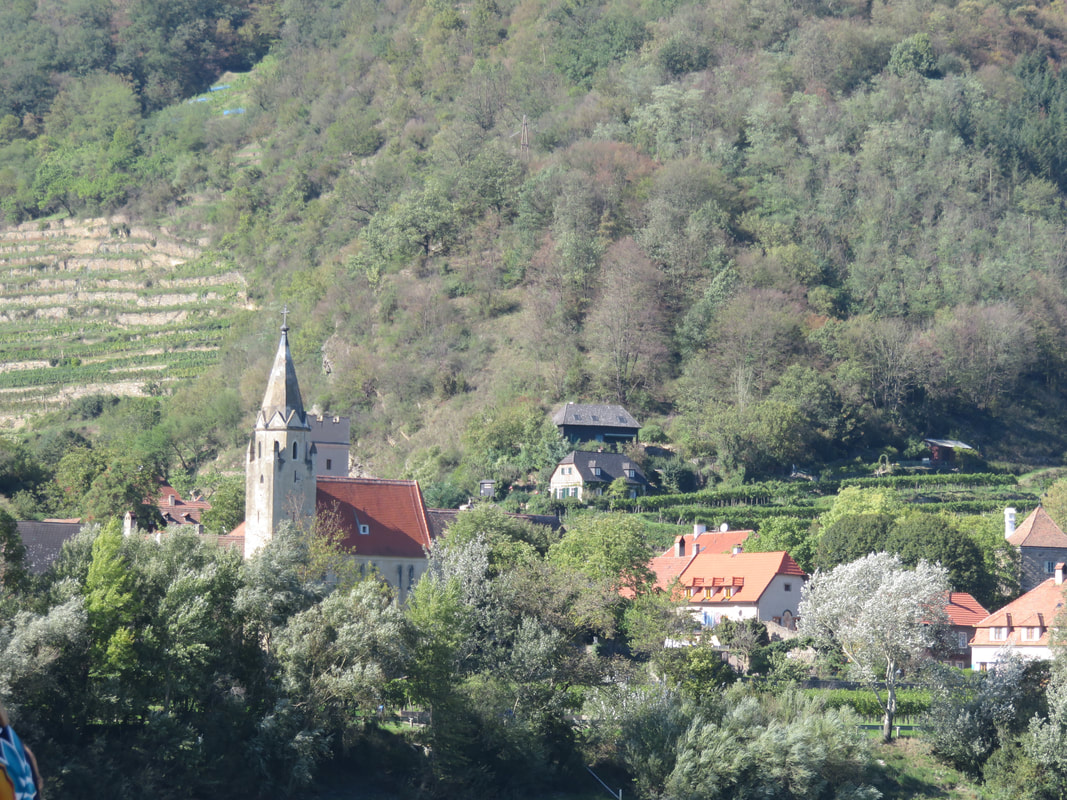














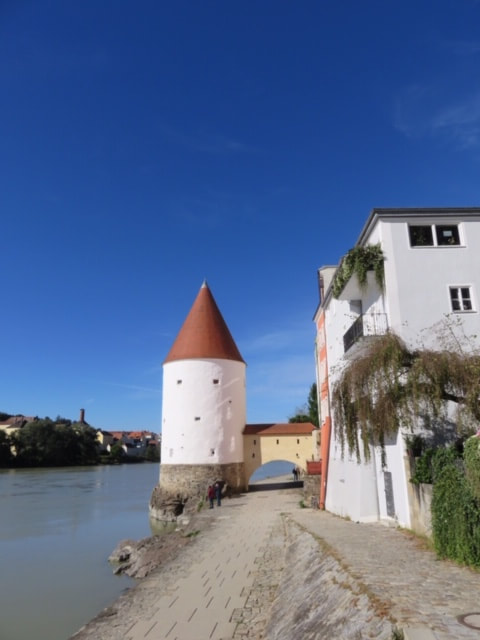

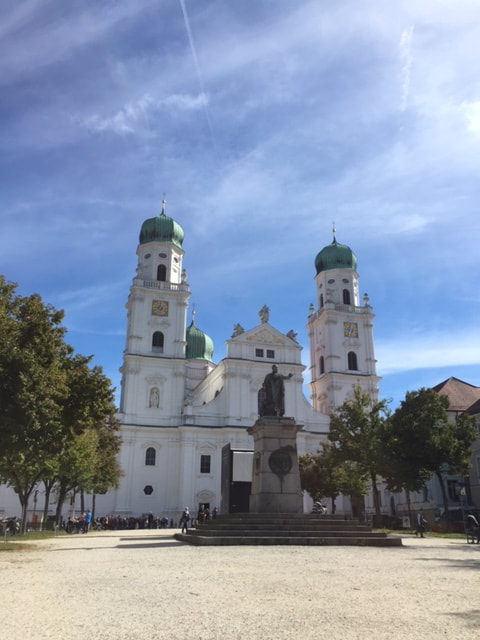














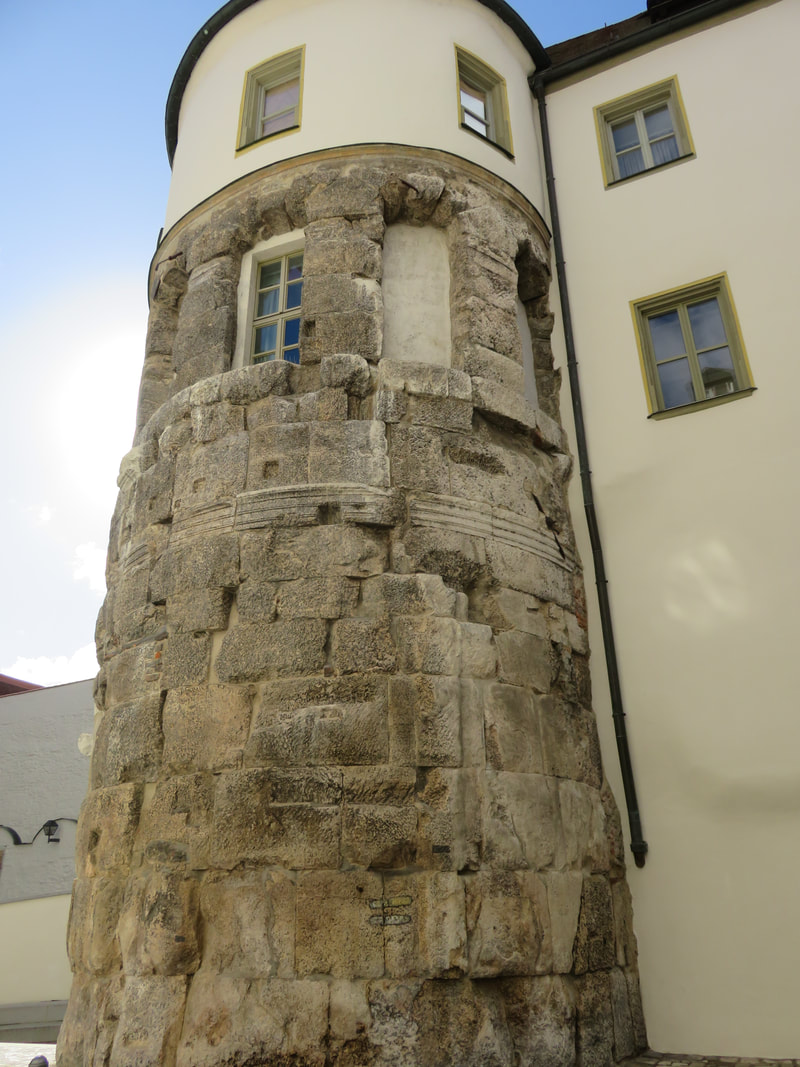
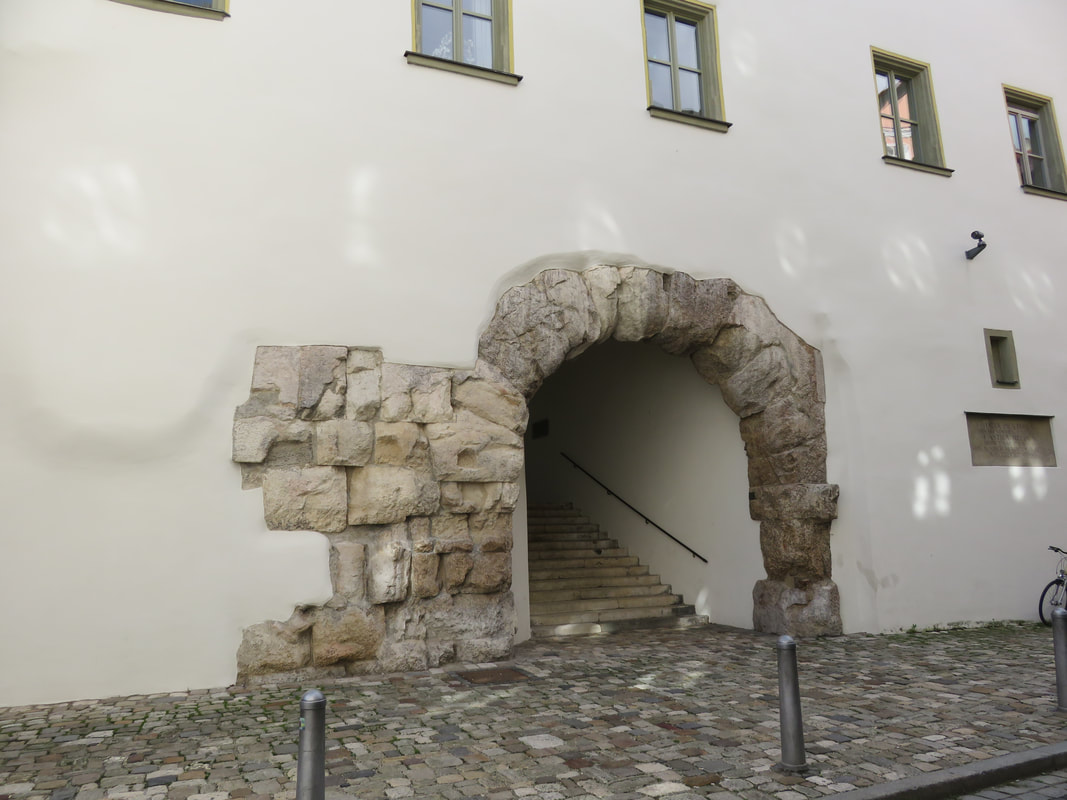







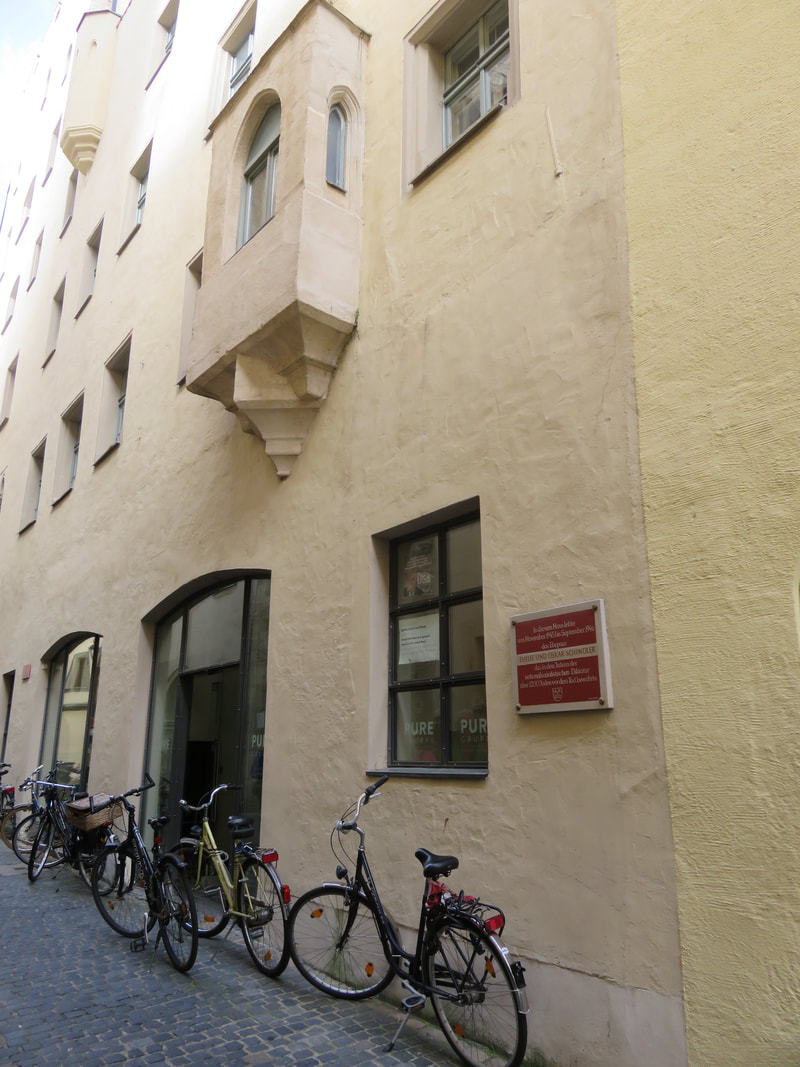
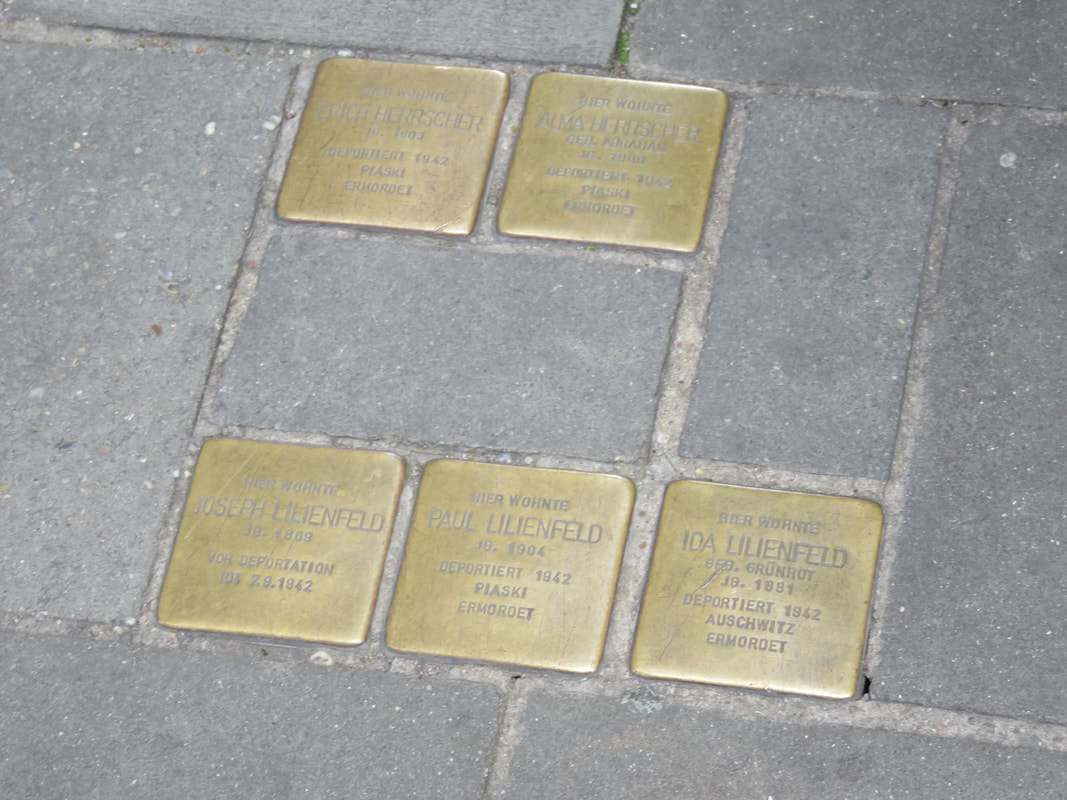



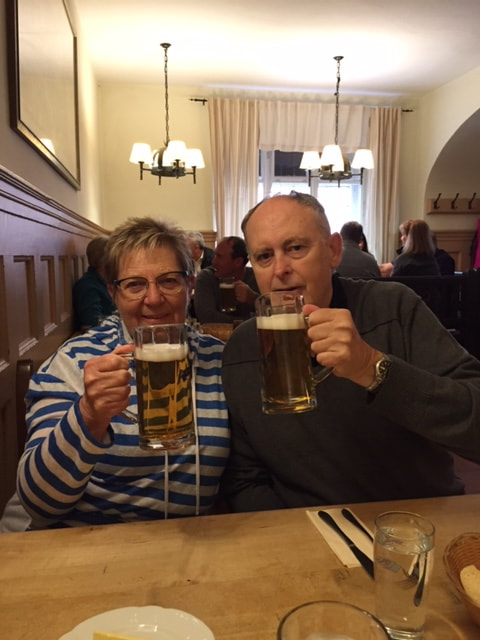

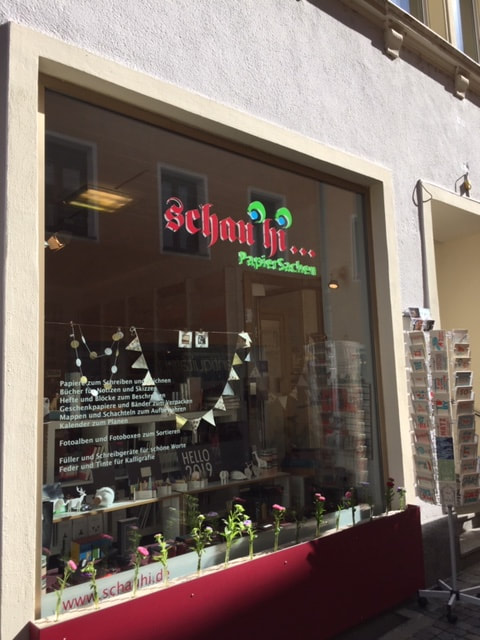


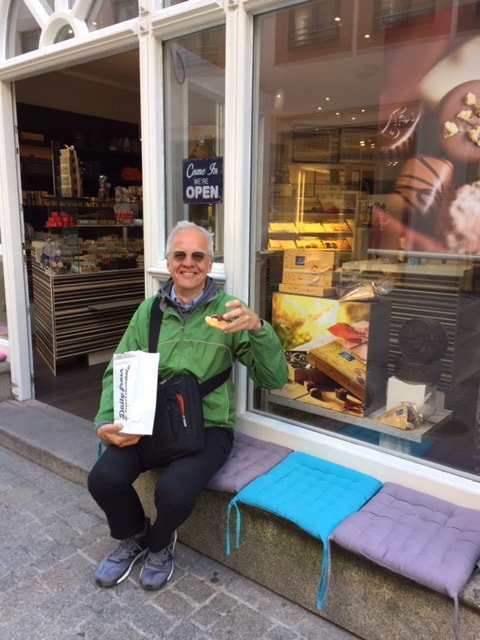





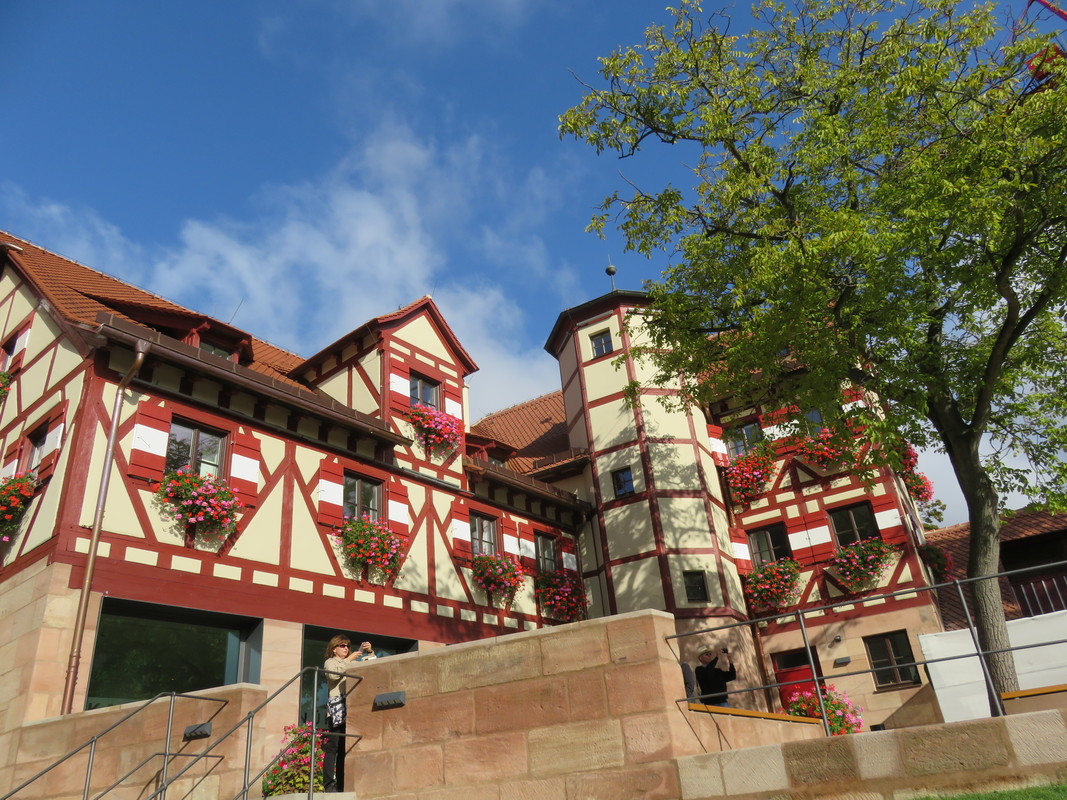
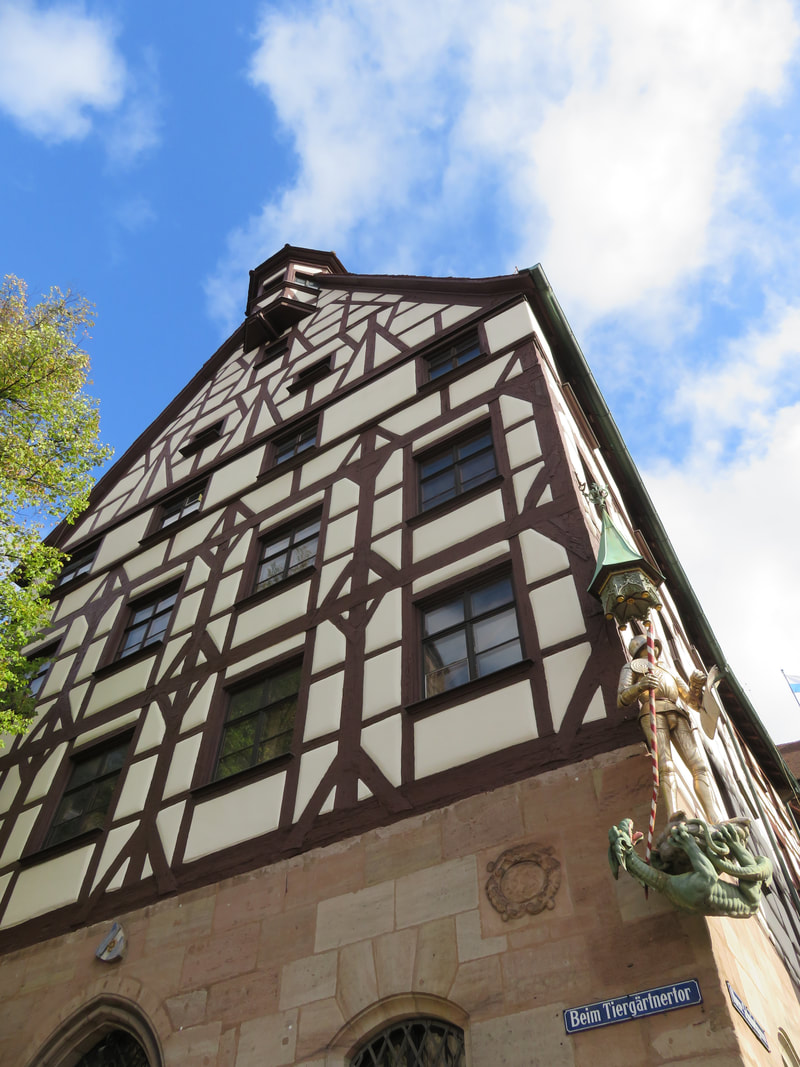









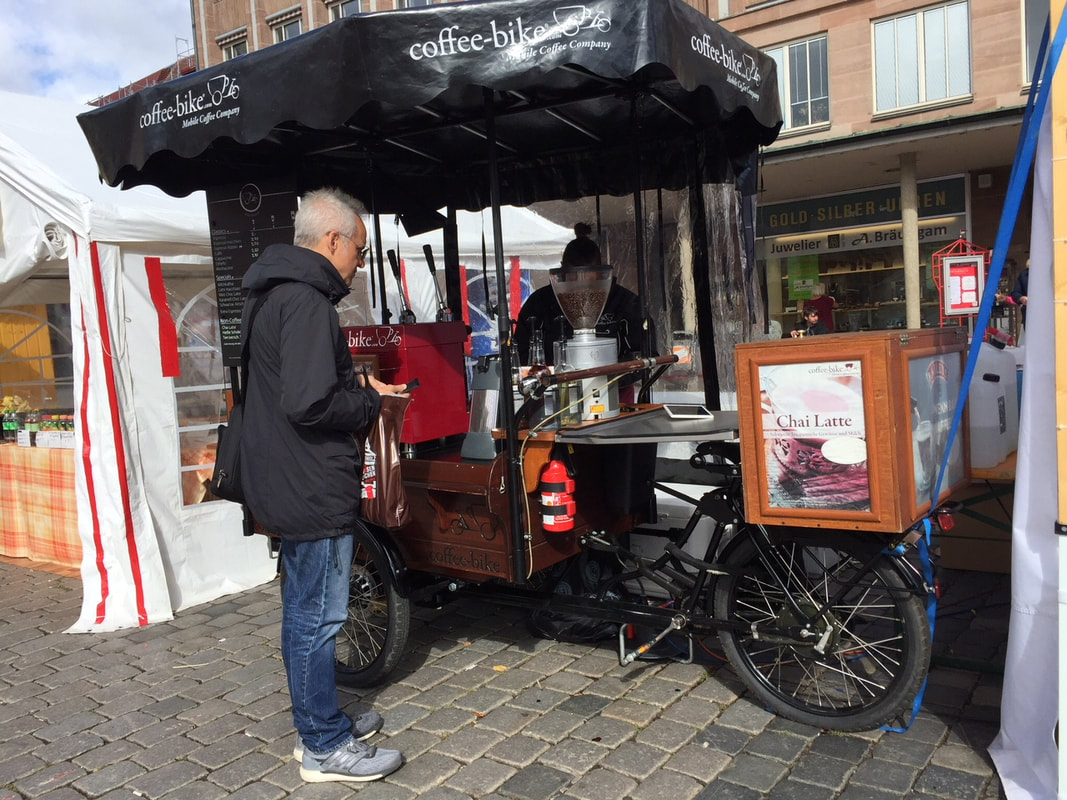
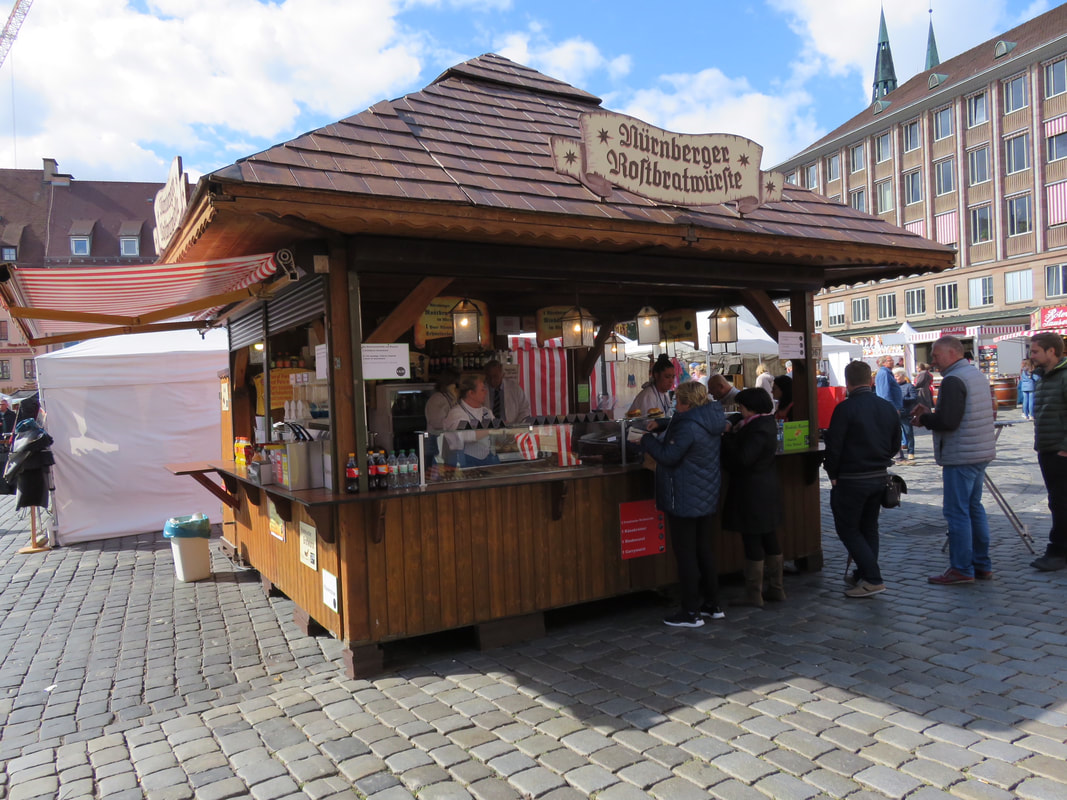
















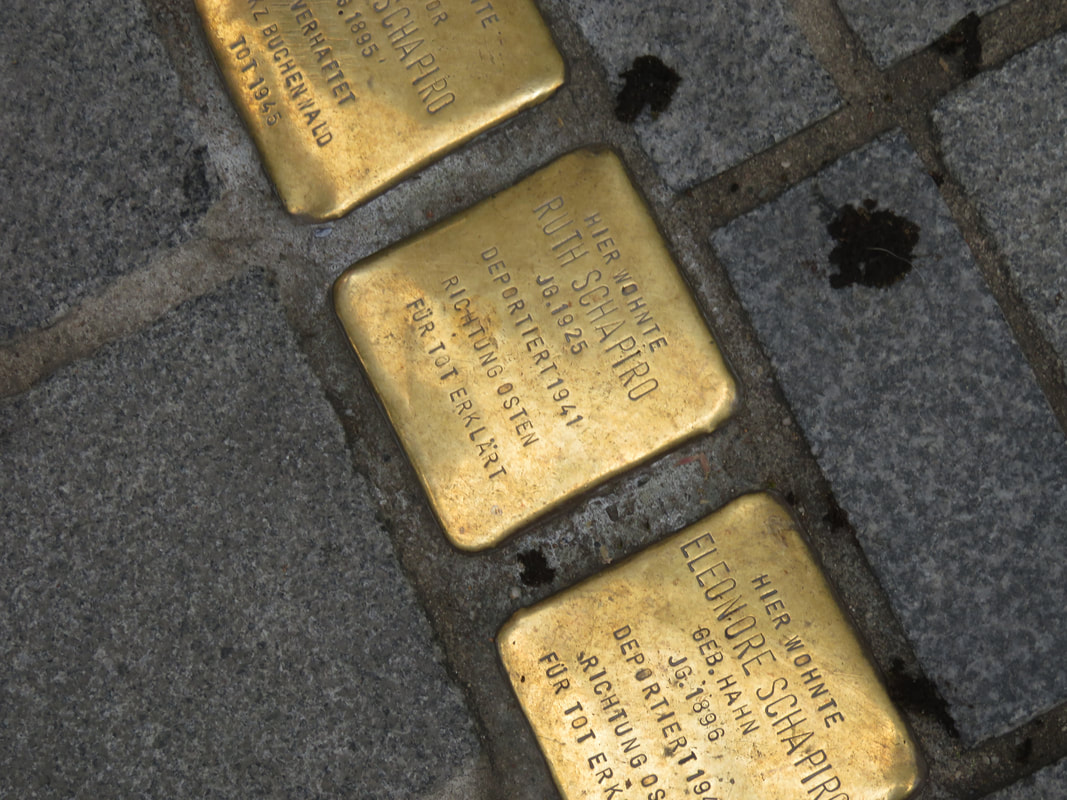






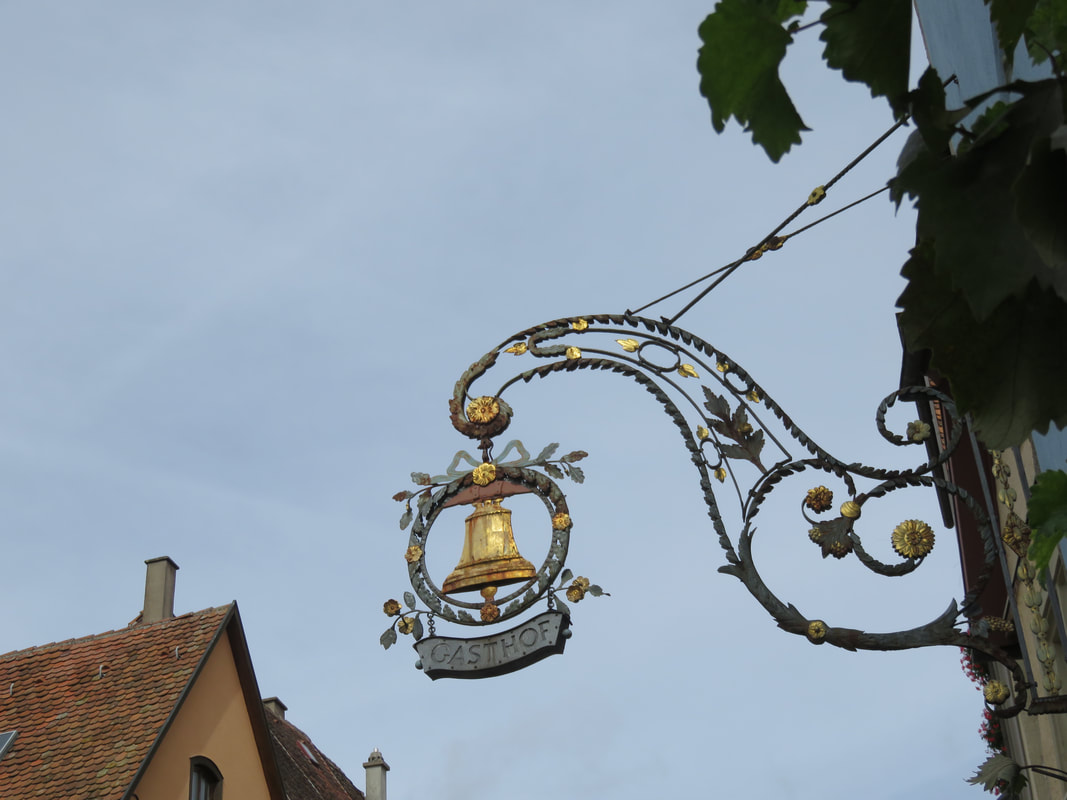





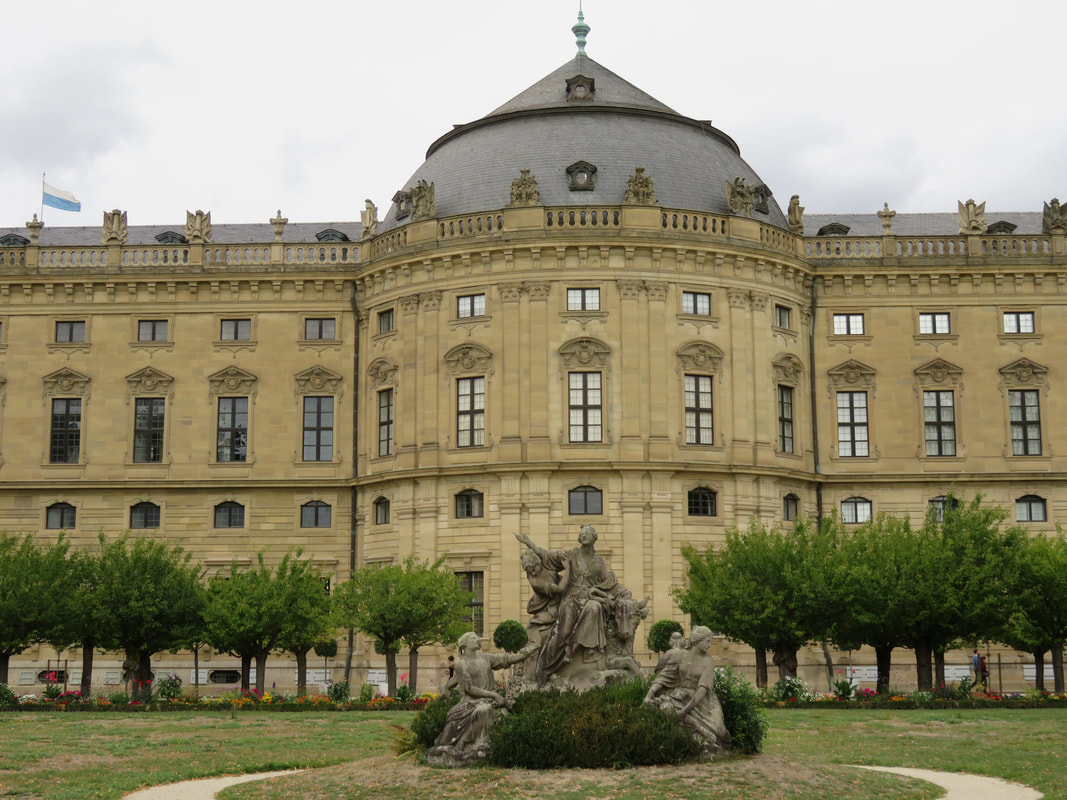



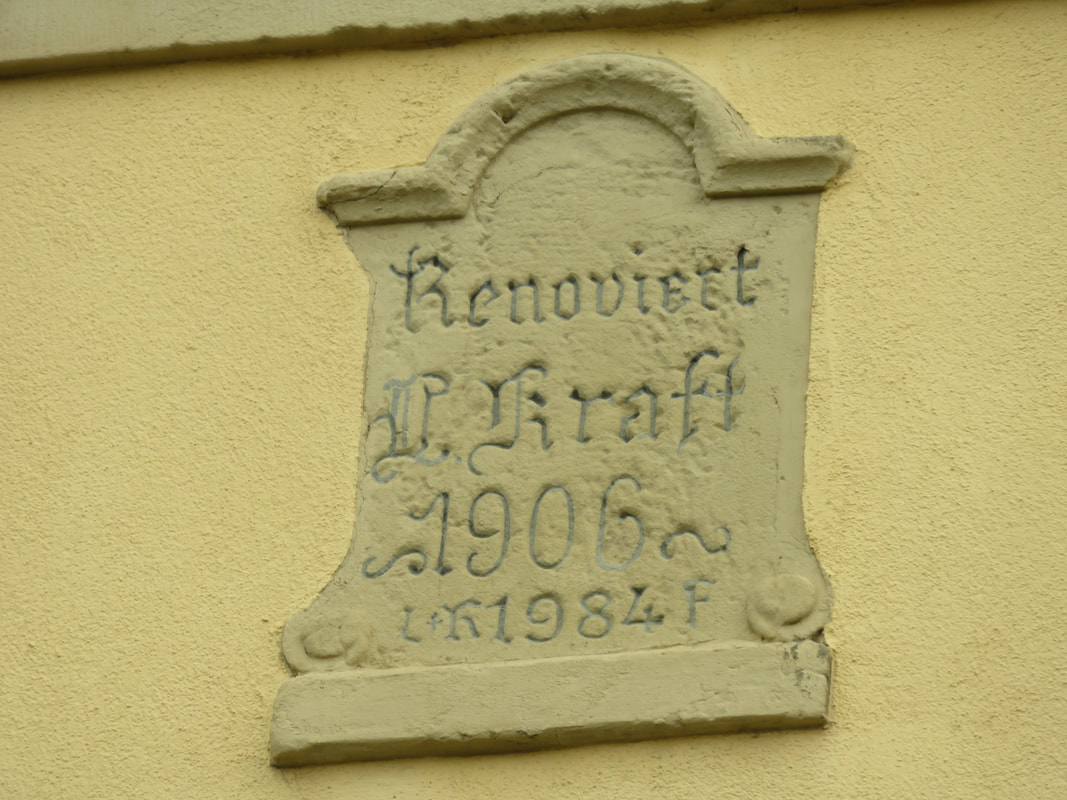
 RSS Feed
RSS Feed
